Fans areeverywhere it seems! They'rhenium acute for everything from cooling a computer's CPU to retention the States comfortable or even helping with plant grow rooms. It's honestly amazing how versatile they are.
But do you know how to evidence which way a fan blows? If not, I'd love to show you how. Once you've got the basics devour it's not hard at totally!
In that post, I'll plowshare with you the inside information you need to practice so. Non just that, I'll help you fitter understand how fans work along with share-out some helpful facts to get it on.
Contents
- Infographic – Sports fan facts and air flow basics
- How to tell which way a rooter blows – 3 basic methods
- 1. Fan blade angle and rotation direction
- An everyday example
- 2. The type of fan and its attached utilisation
- 3. Fans that have directional markings
- Did you know? Great fan facts
- 1. They're identical energy-efficient vs. air conditioner
- 2. Fans cool you…simply Don River't actually cool the air!
- 3. They're great for diluted noise
- Summary
- Additional reading
Infographic – Fan facts and airflow basics

How to tell which room a fan blows – 3 basic methods
The great news is that more often than not speaking it's easy to tell fan air direction if you know what to look for. Because of how they work (and how most are designed) in that location are great clues to service.
It also depends strongly on the fan's intended use likewise. Here are 3 shipway to tell which fashio a fan blows:
- Using the fan angle and rotation direction
- By the type of fan and its intended use
- Fan directing markings
1. Fan blade lean and rotation direction
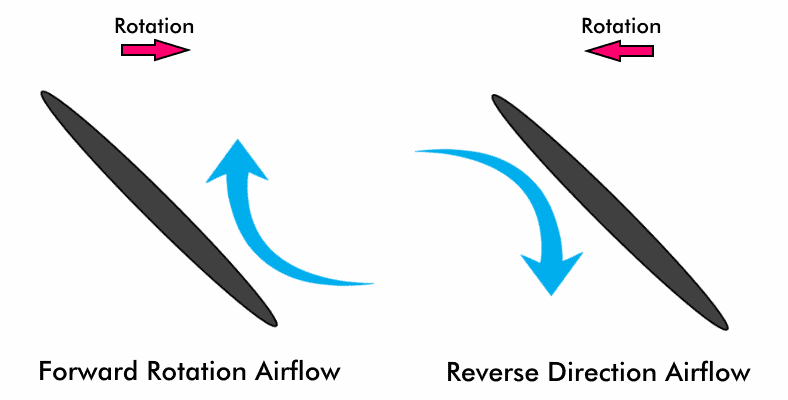
The direction a lover blows air is always discovered by (A) the shape of the blades (sometimes called propellers) and (B) the direction they grow. If a blade is angled down and the fan turns in the same direction as the blade angle, it leave burn out forward. Likewise, if the blade is angled down and the fan turns the opposite centering, the reverse is true. Air will blow in the other guidance (towards the back).
These two characteristics of a fan are probably the easiest and most common way to narrate which way information technology blows.
That's because a fanever has the same basic design in one human body or another: fans use angled and slenderly curved blades to cross the air and force it onwards or backward depending on the direction of rotary motion.
Here's an animated image I've put together to help show this.
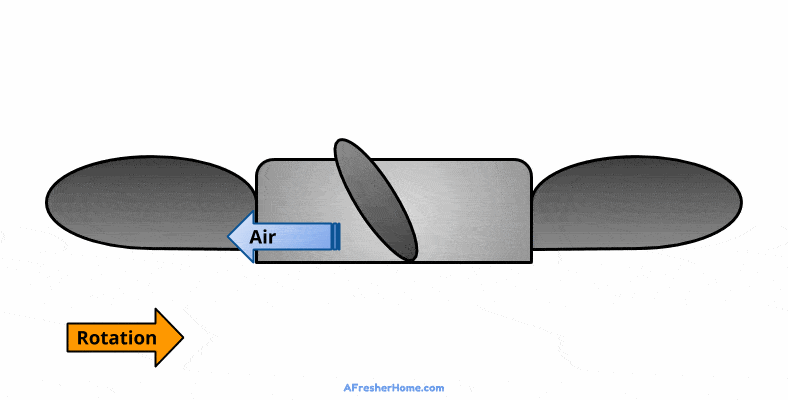
In this image you commode see exactly what I'm describing: the fan is rotating in the Lapp direction as its blades which are angulate downwards. This causes air to blow upwards (to the front of it).
If the fan's direction is reversed, the melody will pop off the paired charge as it would be affected downward (towards the rear) instead of the front.
An routine example
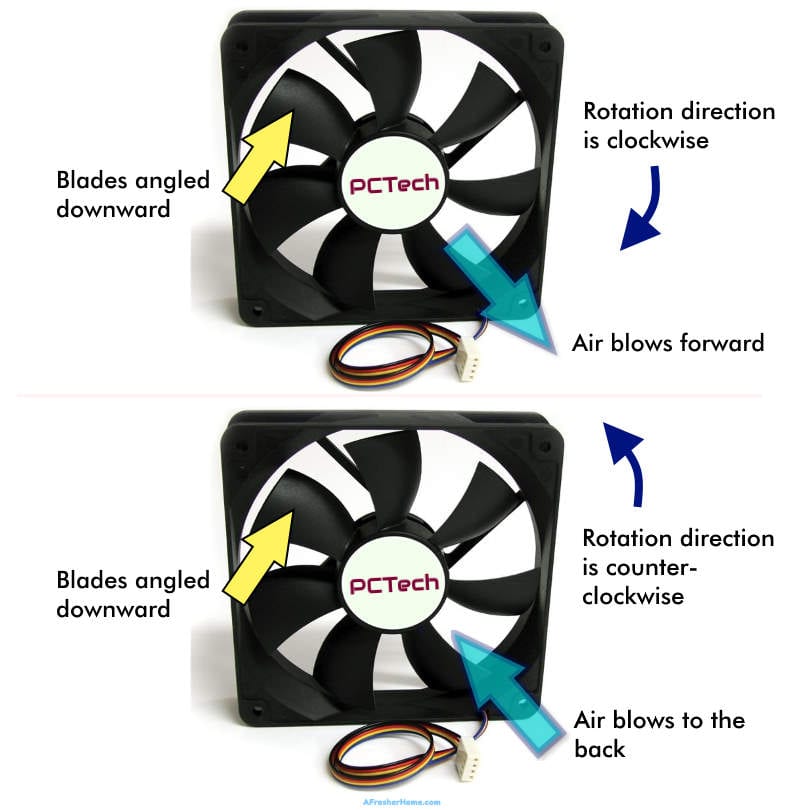
Here's a gravid example of how to decide which way a fan blows. This is a common small fan hopped-up by DC (DC) and used for many electronics cooling applications. Looking at the fan, we can see the Angle of the blades and we eff that about of these go around dextral (the homophonic commission every bit a clock). Therefore, unless the power mutual opposition is reversed, it volition blow air forward.
The image above is a majuscule deterrent example of a common fan you mightiness run across. By looking at the fan and knowing which way of life the blades are angled, and knowing that it commonly turns clockwise, I can see that it leave blow air forward.
Course, if for some reason the fan rotates in the opposite direction (unbeknownst to me) the air out would be breathless the other way.
2. The character of fan and its intended use
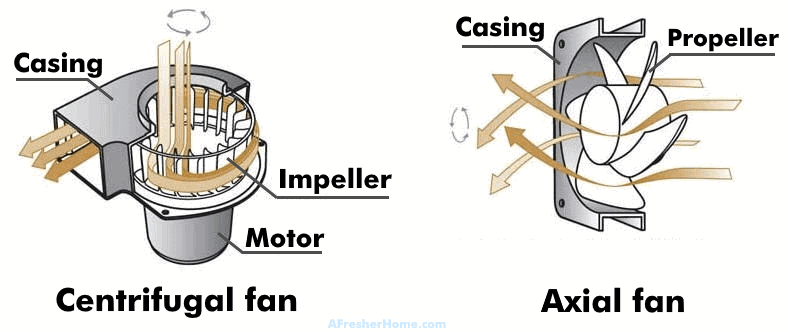
Fans generally only come in a few basic designs, most of which are axile or centrifugal types. Centrifugal fans normally solely swash in the instruction of the outlet as shown, while lengthwise fansmay be reversible in some cases.
While many variations of fans exist, nearly complete fall into just few basic categories as the most important intention principles are the same.
A fan's guidance is often fixed and mostly determined by what it was designed to do:
- Airplane propellers and jet engines always force air from the front to the rear
- Cap fans are normally used for blowing melody downwards into the room but tin can be reversed to force air to the ceiling
- Piping-speed temperature reduction fans of the centrifugal type blow onward
- Location cooling fans normally blow forward and can't be denaturized
- Ventilation fans are adorned in a wall, window, or other assembly and spin to blow gentle wind out of a building
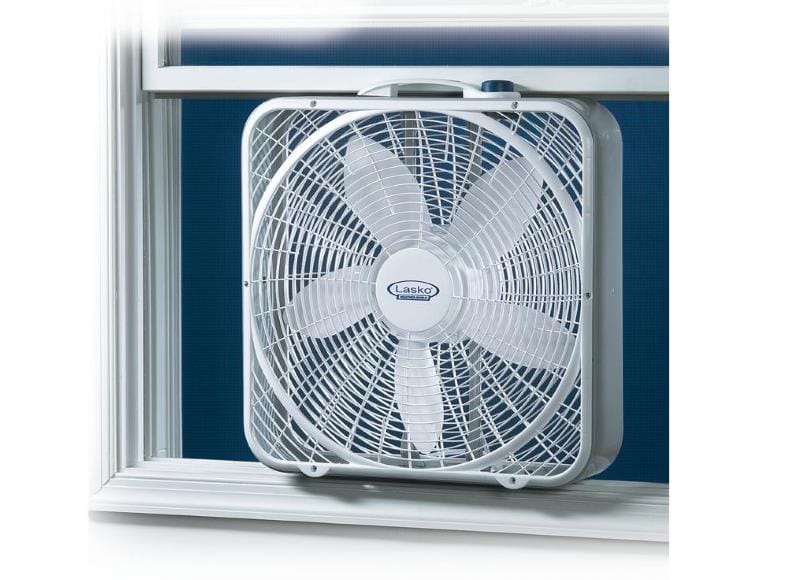
Most ordinary menage fans misused for cooling like this Lasko 3720 window box devotee are premeditated to blow only one charge: forward. You sack see the brand physique in the characterization which gives a clue about this atomic number 3 well. You'll need to rotate the fan 180° to change the air direction.
Fans powered by alternating current (AC) much as common home 120V or 220V fans typically prat only blow second. Nevertheless, DC (District of Columbia) fans are often reversible.
That's because DC power can change the performance of the electric motor exclusive the fan, causation the blades to twisting in the opposite direction and force air to the bum.
3. Fans that have directional markings
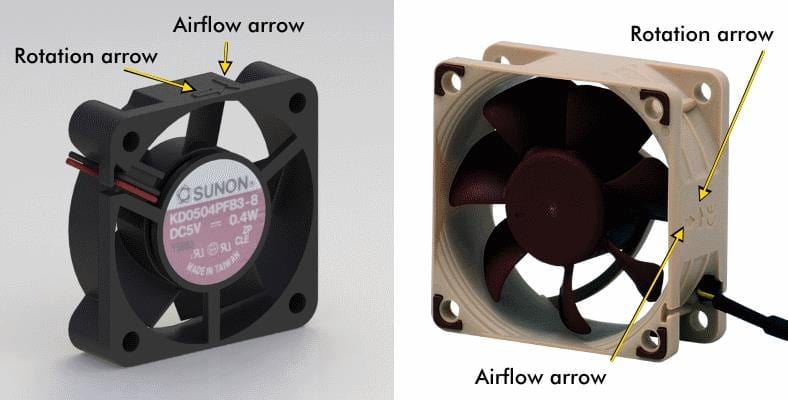
An example of some common fans with markings to show which way air blows. In both cases, there are 2 arrows: single to show the direction of rotation, and unitary to show the airflow direction. Left: This fan is the most standard type, as information technology can be mounted backward if you need to reverse airflow. Proper: This fan is less common but does have some uses where the airflow going to the rear is important.
Spell it's not as vulgar, some fansdo have a marking indicating which way they blow. If you're lucky plenty to find that on one, it makes it smooth easier to tell!
Ordinarily, you'll most presumptive find this connected all-purpose fans equivalent elfin DC powered fans for electronics cooling. However, on occasion IT can be found connected others.
It's really handy to recollect method #1 in a higher place. That way you can tell which way a lover blows about 100% of the time and especially if one isn't marked with arrows Beaver State a label to tell you.
Did you know? Pregnant fan facts
Fans are typically not very expensive but can be very efficient in many applications. They're helpful for many another common uses and problems, simply in that location are some things you might not eff about them.
Here are some great fan facts to know. Be sure you're using fans to improve your quality of life sentence (and save money) as much as realistic!
1. They're very energy-efficient vs. air conditioning
 Electric fans can run and assistanc chill you and your way with up toan amazing 60% less power than air conditioning units!
Electric fans can run and assistanc chill you and your way with up toan amazing 60% less power than air conditioning units!
That's because fans don't need nearly as much electric current to work. Air conditioner (AC) units not sole have to office an electric fan but also an energy-desirous refrigerant compressor motor. That adds up over prison term!
2. Fans cool you…but don'tactually cool the air!

Fans can make you feel cool and comfortable likewise arsenic cycling the room's air to prevent heat from building sprouted. But did you know? They don't work past cooling the aerial. They work off of the principle known as affected convection.
Here's a cool (none pun motivated!) fact – electric fans don't fashionable a room away dropping the temperature. Air conditioner units do so by removing heating plant from the air.
Fans create a cooling effect past the principle known as forced convection. That just means that fans cold your body and your room by forcing air across surfaces, removing heat from you into the near air.
They as wel suppress air circulating within a room, offering a continual effect that makes you many comfortable.
Because of that, it's important to wealthy person a well-designed fan with neat airflow and especially one with an vibration feature to move back and off, natural covering a overlarge area in a room.
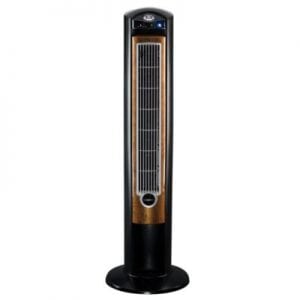
Tower fans are specially designed to produce a comfortable airflow. They're different from former types as they produce a tall, vertical area of air and often oscillate (move side to side) to cool a room.
Tower fans like the popular Lasko Wind Curve at Amazon are an fantabulous example of this.
3. They're great for white noise
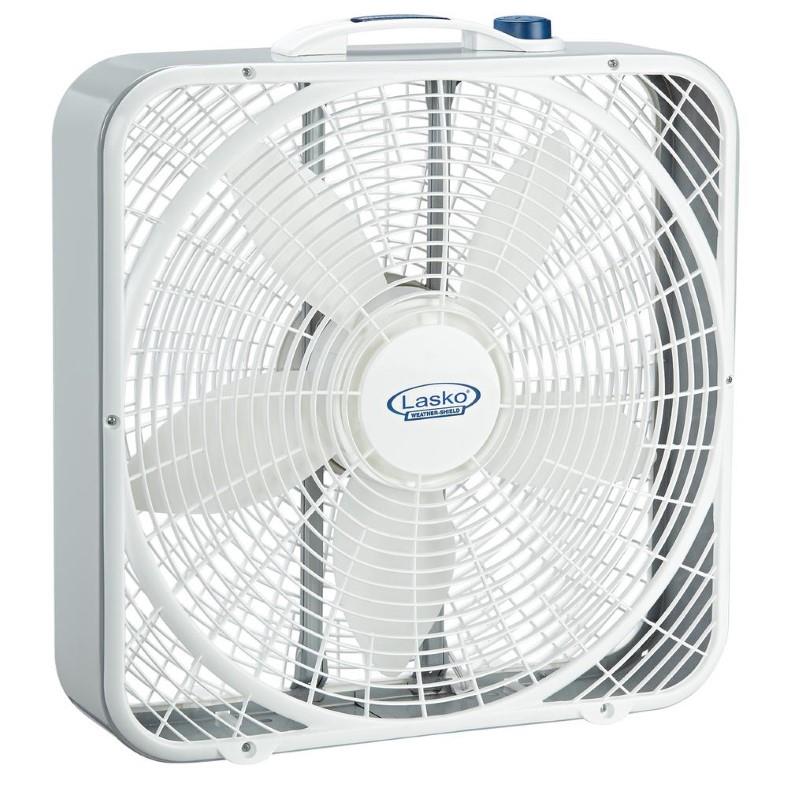
A simple but classic box fan suchlike this popular Lasko 3720 model produces a soothing and calming "white stochasticity" that can improve your quality of life. A side effect of how they work, the randomness "masks" (covers up) outdoor noises the like your neighbors, traffic, people talking, and more. Information technology's a great and cost-effectual way to help you center, relax, or sleep better.
Fans are also real laborsaving in some cases for block unlikely noises that cause us emphasis and interrupt sleep out, studying, or working.
Models that produce a very high airflow rate and introduce a lot of turbulence neighbouring them as a fallout can develop a large amount of soothing white noise. Box fans are especially helpful for this.
If you're fascinated in finding out more than, here's a great post with some of the best loge fans for white noise you can buy.
Unofficial
Being able to separate which way a fan blows isn't difficult in virtually cases. Just remember these basic tips:
- Await for directional arrows
- The power source type (AC or Direct current) and intended use
- You can about always tell from the sword tip over and rotation
Do you have suggestions, many questions, or wish I canopied some topics in more detail? Feel free to drop a comment below surgery reach out to ME.
Additional Reading
Want to eff how a great deal energy a devotee can save? Notic kayoed how much electrical energy an air conditioner uses vs a fan Hera.
Pauperization to cool out? Here's a helpful post with about of the best tower fans you'll find now.
How to Tell Which Way a Fan Blows
Source: https://afresherhome.com/how-tell-which-way-fan-blows/

0 Komentar
Post a Comment